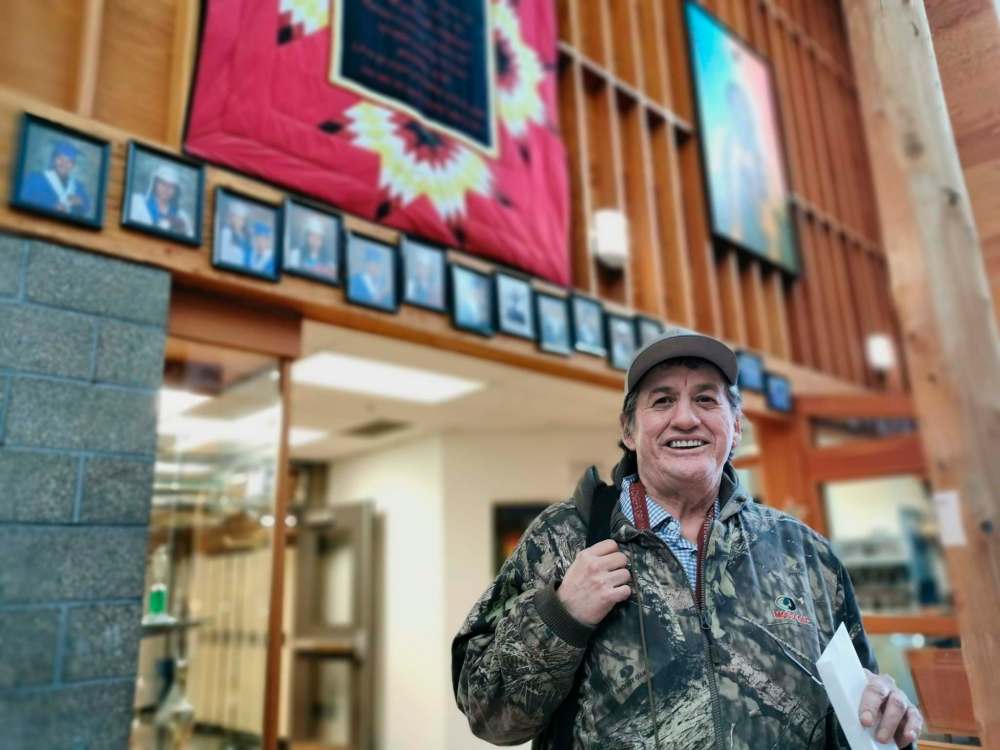First Nations weigh options on school reopening
Advertisement
Read this article for free:
or
Already have an account? Log in here »
We need your support!
Local journalism needs your support!
As we navigate through unprecedented times, our journalists are working harder than ever to bring you the latest local updates to keep you safe and informed.
Now, more than ever, we need your support.
Starting at $15.99 plus taxes every four weeks you can access your Brandon Sun online and full access to all content as it appears on our website.
Subscribe Nowor call circulation directly at (204) 727-0527.
Your pledge helps to ensure we provide the news that matters most to your community!
To continue reading, please subscribe:
Add Brandon Sun access to your Free Press subscription for only an additional
$1 for the first 4 weeks*
*Your next subscription payment will increase by $1.00 and you will be charged $20.00 plus GST for four weeks. After four weeks, your payment will increase to $24.00 plus GST every four weeks.
Read unlimited articles for free today:
or
Already have an account? Log in here »
Hey there, time traveller!
This article was published 27/08/2020 (1891 days ago), so information in it may no longer be current.
Chief Ken Chalmers wants to ensure that students at Birdtail Sioux First Nation’s Chan Kagha Otina Dakota Wawaya Tipi School remain safe.
Chalmers was on his way to Winnipeg to meet with his principal Thursday, and while plans for the school aren’t set, he has a pretty good idea what a plan might look like. The First Nation school is part of Frontier School Division, which released its plan this past month based on the province’s back-to-school plan. Chalmers said the First Nation is working out its own plan.
With approximately 140 students to keep safe and almost half a dozen teachers who come from Brandon, Chalmers has a tricky situation on his hands. As of yesterday, Brandon had 120 active cases of COVID-19.

“There is a lot of growing concern with the people at Birdtail,” Chalmers said.
Whatever the plan the Birdtail decides on, Chalmers said it will be First Nation-driven. One possibility is delaying the school opening for 30 days so Brandon can come out of its Code Orange state and a lower rate of infection.
“Personally, I’m kind of leaning to not opening right now,” he said.
However, in anticipation of the school year, all the students are being connected to the internet.
“We want our teachers at the school, in their bubble, but for the kids we’re leaning toward the internet. Kids picking up their work on Monday and turning it in on Friday. And Zooming with their teachers,” Chalmers said.
He said the First Nation waited for the province’s plan, which it received last week.
“We’re not very happy with it,” Chalmers said.
Meanwhile, the Manitoba First Nations School System (MFNSS), which administers on-reserve schools for 11 First Nations across the province, is working closely with each community to deliver individual plans, including with Keeseekoowenin Ojibway First Nation’s K-8 Keeseekoowenin School.
Unlike the province, the MFNSS did not mandate that all students would be returning to school Sept. 8.
“We could have, but we don’t operate that way,” said Nora Murdock, director of instructional services.
“We worked with individual First Nations to determine what’s best for their community.”
Three of the 11 schools aren’t opening Sept. 8, such as Keeseekoowenin. Murdoch said that’s because of that First Nation’s proximity to a hot zone — Brandon.
“They are definitely not opening on September the 8th. We’ll be providing remote learning for all their students for the time being,” Murdock said.
A meeting is set to discuss what will happen with the 9-12 students, who would normally attend a nearby high school. Murdock said plans are being developed for other First Nations’ high school students who would normally attend provincial school to learn remotely.
“Some of the parents don’t want them to go. We do have a virtual high school, so we just have to register them under the virtual high school,” Murdock said.
That would increase the school system’s student count of roughly 2,000 students by up to 300 students.
Dakota Tipi First Nation — which only has nursery and kindergarten on-reserve while the rest of the students attend school in the Portage la Prairie School Division — has quite a few parents wanting to keep their children at home. The MFNSS will be providing its services for them.
Once remote learning gets started, the MFNSS will monitor the situation with each chief and council and the local health authority to determine how the situation is evolving, which will be the basis for reopening partially or fully, or continuing with remote learning.
Some of the First Nations schools are delaying their start date by a week or a couple of weeks, much like Birdtail’s potential delay.
“Even though the 14-day self-isolation period is not mandatory, some of them are requiring that their teachers self-isolate prior to starting work,” Murdock said.
Other MFNSS schools are going to split their students and rotate in-school attendance, as Chalmers indicated was a possibility for his community’s on-reserve school, including using Fridays for deep sanitization.
» mletourneau@brandonsun.com
» Michele LeTourneau covers Indigenous matters for The Brandon Sun under the Local Journalism Initiative, a federally funded program that supports the creation of original civic journalism.
